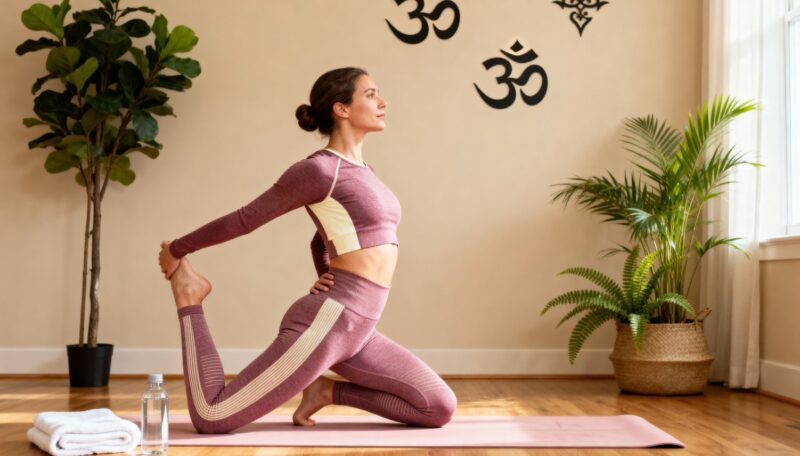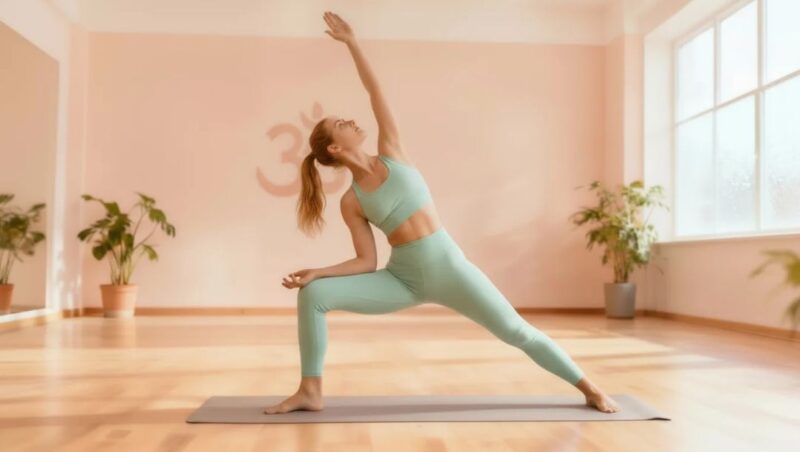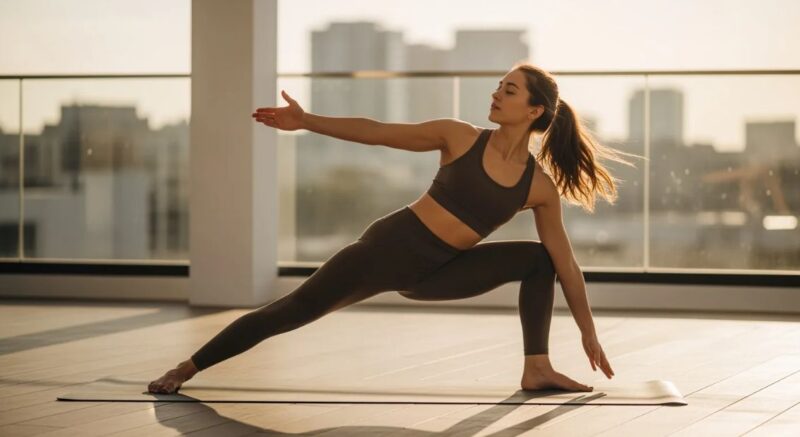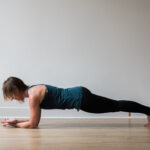Most people come to yoga with one of two goals: to build a stronger body or to create a calmer mind. A useful way to think about it is this: every major yoga style develops both qualities at the same time, only in different proportions. Some forms challenge your muscles with controlled, steady engagement. Others emphasize breath rhythms, inner focus, and mental quiet.
The concrete answer is simple. If the session feels physically intense, it leans toward strength; if it slows your thoughts and deepens your awareness, it pushes you toward mindfulness. The most impactful yoga practice balances both, and the best approach is to understand what each style actually does for your body and attention.
With that in mind, below is a detailed breakdown of the most practiced styles today, how they impact muscle development, how they cultivate mental stillness, and how you can choose the right blend for long-term wellbeing.
Why Strength and Mindfulness Work So Well Together

Strength-based yoga builds stability, joint control, and neuromuscular endurance. Mindfulness-based yoga teaches breath awareness, emotional clarity, and nervous system balance. When practiced together, they reinforce each other. Stronger muscles improve posture, which supports deeper breathing. A calmer mind lowers muscle tension, which prevents injury and improves form.
A clear example is the combination of slow eccentric holds with steady breathing. Muscles learn precision while the mind learns to stay with mild discomfort without becoming overwhelmed. It is one of the reasons athletes, office workers, and people recovering from burnout are all drawn to yoga even when their goals look different.
Below is a simple table showing how strength and mindfulness typically overlap in yoga practice:
| Yoga Benefit Category | Physical Impact | Mental Impact |
| Controlled poses | Builds endurance in stabilizer muscles | Improves concentration during discomfort |
| Breath-to-movement flow | Enhances mobility and coordination | Reduces scattered focus, increases presence |
| Long static holds | Improves joint integrity and alignment | Slows nervous system activity |
| Guided relaxation | Helps muscles release chronic tension | Deepens emotional regulation |
Hatha Yoga: Structured, Steady, Foundational
Hatha yoga often feels slower, clearer, and more intentional than other dynamic styles. The physical practice emphasizes precise alignment, steady breathing, and long holds that teach the body how to maintain strength without relying on momentum. People who prefer mindful pacing or are returning from injury often respond well to Hatha because it avoids rushing the body into transitions.
In terms of strength, Hatha challenges deep stabilizer muscles, especially in the hips, core, and upper back. Each pose becomes a controlled environment where the practitioner learns how to activate the right muscles without over-tensing others. That is why Hatha is often recommended for beginners who want to feel strong without pushing too aggressively.
Mentally, Hatha supports mindfulness by maintaining stillness long enough for breath and body awareness to settle. Holding a Warrior II for eight slow breaths forces you to concentrate not only on the sensation in the legs but also on the thoughts that rise in the quiet moments. Over time, the practice builds emotional patience, which translates into real-life situations where calm decision-making is needed.
Vinyasa Yoga: Strength Through Rhythm, Mindfulness Through Flow

Vinyasa yoga, known for its continuous transitions, is one of the most effective styles for simultaneous physical conditioning and mental focus. The practice uses flowing sequences that demand active engagement of the core, shoulders, and legs. It strengthens the body through repetition, controlled load, and dynamic movement patterns similar to functional training.
What makes Vinyasa unique is how it links breath to motion. Each inhale and exhale dictates the timing of the transitions. This creates a meditative rhythm that narrows your attention into the present moment, reducing mental noise and encouraging emotional clarity.
A large number of European practitioners experience this combination through programs such as Vinyasa Yoga in Switzerland, where teachers focus on the connection between physical challenge and mental awareness. Mid-level and advanced students often find that this style offers the perfect ratio between muscular strength and mindful concentration, especially when practiced consistently.
Below is a comparison table showing what happens in the body and mind during a typical Vinyasa flow:
| Vinyasa Feature | Effect on Strength | Effect on Mindfulness |
| Sun salutations | Increases heat, activates the full body | Establishes breathing rhythm |
| Chaturanga sequences | Strengthens chest, arms, core | Builds focus during demanding transitions |
| Flow pacing | Improves cardio and functional mobility | Maintains presence through continuous movement |
| Closing stretches | Releases tension | Encourages emotional grounding |
Ashtanga Yoga: Discipline, Power, and Mental Precision
Ashtanga is a highly structured system with a set sequence of poses. The repetition builds deep physical strength, especially in the shoulders, arms, and core, as practitioners move through rigorous transitions like jump-backs and jump-throughs.
Because the sequence remains consistent, the body adapts faster, resulting in measurable endurance gains.
Mentally, Ashtanga encourages a disciplined form of mindfulness. Breath control, gaze direction, and posture alignment must stay unified. The practice leaves almost no space for mental drifting, which is why it can be grounding for people who thrive on routine or want a practice that feels athletic yet meditative.
If someone prefers a style that feels challenging in a predictable structure, Ashtanga often becomes their long-term home.
Iyengar Yoga: Strength Through Alignment, Mindfulness Through Detail
Iyengar yoga is known for its precision. Props like blocks, straps, and bolsters help refine alignment so the practitioner can hold poses safely and effectively. This style builds strength slowly but very thoroughly. Muscles learn to support joints without compensation, and repeated adjustments teach the body better biomechanics.
On the mental side, Iyengar develops mindfulness through attention to detail. Practitioners must observe subtle shifts in weight distribution, breath expansion, and muscular engagement. The depth of observation becomes a mental training session in itself.
People recovering from injuries or dealing with chronic tightness often find Iyengar a transformative path because the emphasis on structure minimizes unnecessary strain.
Yin Yoga: Slow Stretches, Deep Stillness
Yin yoga targets deep connective tissues with long, supported holds. Instead of building muscular strength, Yin promotes flexibility, joint hydration, and passive release. It complements strength-based styles by giving the body time to soften and repair.
Mindfulness is at the core of Yin. With each pose held for several minutes, the body naturally quiets, and the practitioner becomes aware of inner sensations and emotional responses. The slow pace encourages introspection and mental unwinding.
Although Yin is physically light, it is mentally powerful, especially for people who struggle to slow down in daily life.
Restorative Yoga: Nervous System Reset
Restorative yoga uses props to place the body in comfortable, supported positions. Poses are held quietly for extended periods.
Instead of strength, the goal is complete relaxation that allows the nervous system to shift into a restorative state.
For mindfulness, this style is unmatched. Long, quiet moments give the mind time to let go of tension and connect to breath and bodily signals.
Many people use Restorative yoga during periods of burnout, insomnia, or emotional fatigue because it provides a safe space where the mind can recalibrate.
Power Yoga: Athletic Strength With Mental Drive
Power yoga adapts Vinyasa into a more fitness-oriented form. Classes often include planks, arm balances, and strong standing sequences that significantly develop upper-body and core strength. People who prefer a workout often gravitate toward Power yoga.
Even though it is more physical, mindfulness still plays a role. Holding challenging poses requires concentration, and the demand for breath control keeps the brain alert and centered.
It is an ideal style for those who want both muscular conditioning and basic meditative benefits in one session.
Choosing the Right Style: Matching Your Goal to Your Practice
Selecting the right yoga style depends on whether you want the emphasis on physical strength, mental stillness, or a blend of the two. A simple guide is below.
| Your Primary Goal | Recommended Styles | Why They Fit |
| Build total-body strength | Ashtanga, Power, Vinyasa | Strong sequences, active transitions |
| Improve mobility with moderate strength | Hatha, Iyengar | Alignment-focused, slower pace |
| Deep mental clarity and calm | Yin, Restorative | Long holds, nervous system reset |
| Balanced practice | Vinyasa, Hatha | Mix of movement and breath awareness |
Final Thoughts

Different yoga styles support strength and mindfulness in unique ways, and the most effective long-term practice usually includes a blend of approaches.
Stronger sessions develop physical confidence, and slower sessions teach emotional steadiness.
When combined, they create a fully integrated sense of wellbeing that extends far outside the mat. With time and consistent practice, yoga becomes both a training method and a mental anchor, shaping how you move, breathe, and react in daily life.







